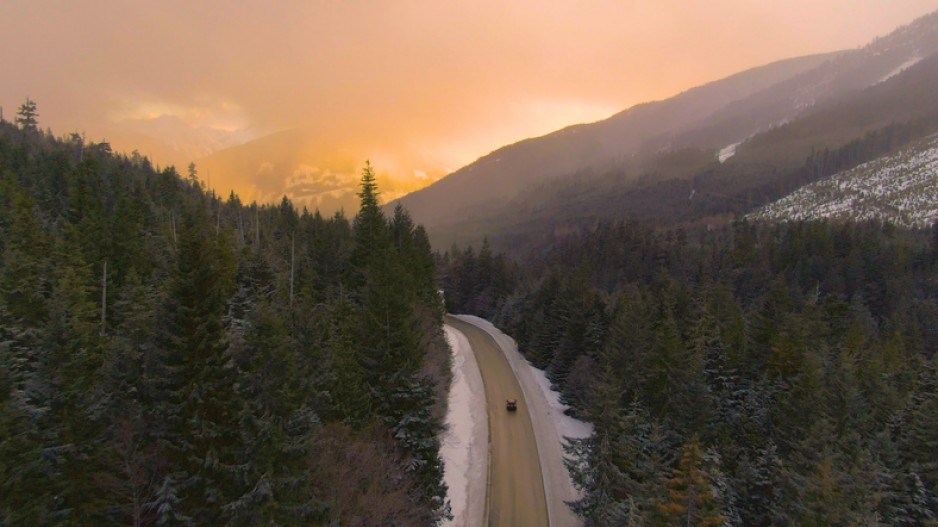The B.C. government and BC Parks Foundation have teamed up to provide $300 million to protect old-growth forests across the province — a move environmental groups have described as a critical step in turning local economies away from unsustainable logging.
Praise for the new green funding came from all sides. Ken Wu, executive director of Endangered Ecosystems Alliance, said the new fund will put First Nations “in the driver's seat.”
“If you don't have the funding for the nations… it’s like asking them to jettison their primary source of revenues and jobs,” said Wu.
“It’s the fuel that will actually allow old growth to get saved.”
On the coast, the B.C. government defines old-growth trees as those more than 250 years old, while in the Interior, the designation depends on the type of forest and can range from more than 140 years to more than 250 years old. Such old-growth forests make up roughly 20 per cent of B.C.'s forests, according to the province.
Under a new conservation financing mechanism, the money will go toward building alternative economies so First Nations can build revenue outside the harvesting of old-growth trees. That could include anything from ecotourism, clean energy projects and sustainable seafood operations to non-timber forest products like wild mushrooms and jobs managing new protected areas, Wu said.
Earlier Thursday, Premier David Eby said conserving nature is “one of the most important things we can do to protect against the worst effects of climate change.”
Terry Teegee, a board member of the BC Parks Foundation, said many nations are looking for alternatives to transform jobs into a sustainable economy.
“First Nations have always believed that if we take care of nature, it will take care of us,” said Teegee, who is also a regional chief with the BC Assembly of First Nations.
“This funding will help support nations who have a vision of abundance in their territories. That will benefit everyone.”
The announcement was also lauded by other environmental groups.
“This conservation financing mechanism puts major wind in the sails for the protection of old-growth forests in B.C.,” added TJ Watt, a campaigner and photographer with the Ancient Forest Alliance.
Torrance Coste, national forest and climate campaigner for the Wildness Committee, said the money was one of the “missing ingredients” in protecting old-growth forests in B.C., but that the province has yet to “stand up to logging corporations.”
Linda Coady, president of the BC Council of Forest Industries, said it supported the new fund, describing it as a “new and innovative B.C.-based approach.”
“These last three years have been challenging for the B.C. forest sector since the November 2021 provincial announcement to defer old-growth logging. While temporary, the uncertainty about the future of the deferral areas impacts forest sector jobs and communities across B.C.,” the industry group, which represents some of B.C.'s biggest forestry companies, said in a statement.
The conservation financing mechanism will be managed by an oversight committee independent of the B.C. government, according to the Ministry of Forests.
It is meant to work alongside forest landscape plans meant to establish new objectives around how to manage old-growth trees, climate change, wildfire risk and biodiversity. Plans under that framework have been confirmed in the Bulkley Valley, 100 Mile House, Williams Lake and Vancouver Island.
This year, the B.C. government pledged to protect 30 per cent of B.C.'s land base by 2030. But just how it will do that has not been clear. The latest announcement offers a long-term source of money Wu says will grow as it’s matched through crowd-sourcing, and federal, provincial and philanthropic funding agreements still under negotiation.
Anyone interested in contributing to the fund can do so through the BC Parks Foundation.
Wu, who has been one of the leading advocates of the funding scheme since 2017, says there remain at least three big gaps in how the province intends to protect its oldest and most vulnerable forest ecosystems.
First, he said the conservation financing mechanism has yet to be tied to specific ecosystem-based targets, which would ensure the most endangered and least represented ecosystems are protected. Consider big-treed valley bottoms, he said. It's a lot harder to protect them than a sparsely treed alpine area.
“Without ecosystem-based targets, it's like sending in the fire crews to hose down all the non-burning homes while the houses on fire get ignored,” Wu said.
A second gap, according to Wu, is a lack of money to support First Nations economic activities while old-growth deferrals are in place over the next couple of years. Without that, he said there’s no room to figure out what to do next.
Third, Wu pointed to the province’s failure to uphold standards for the areas it chooses to protect. His worry is that it could lead to loopholes where protected forests still face unsustainable logging.
“The concern here is that the province may be looking at flexitarian protected-area standards — sort of like a vegetarian who still eats chicken and pork and beef,” he said.
Despite the long road ahead, Wu remained hopeful.
“This is a big lead forward. Let’s make no mistake: it’s a great day.”




